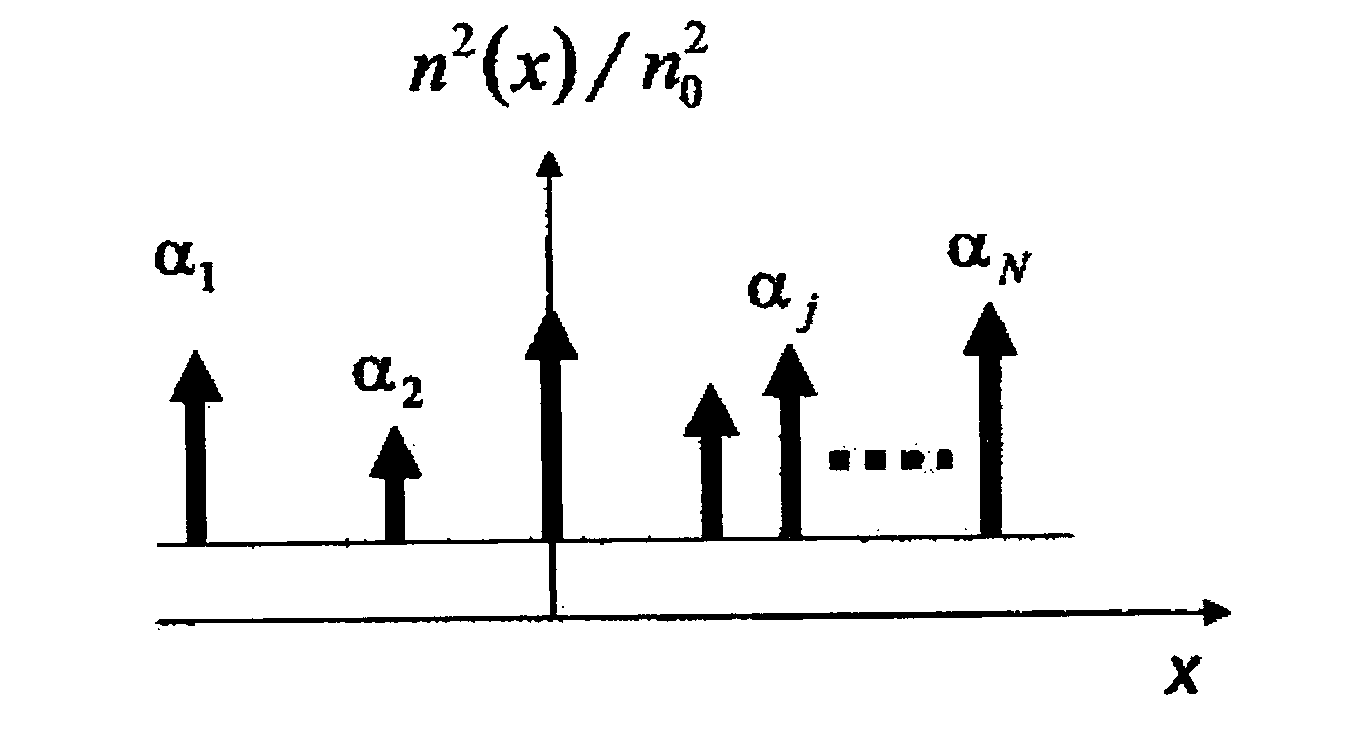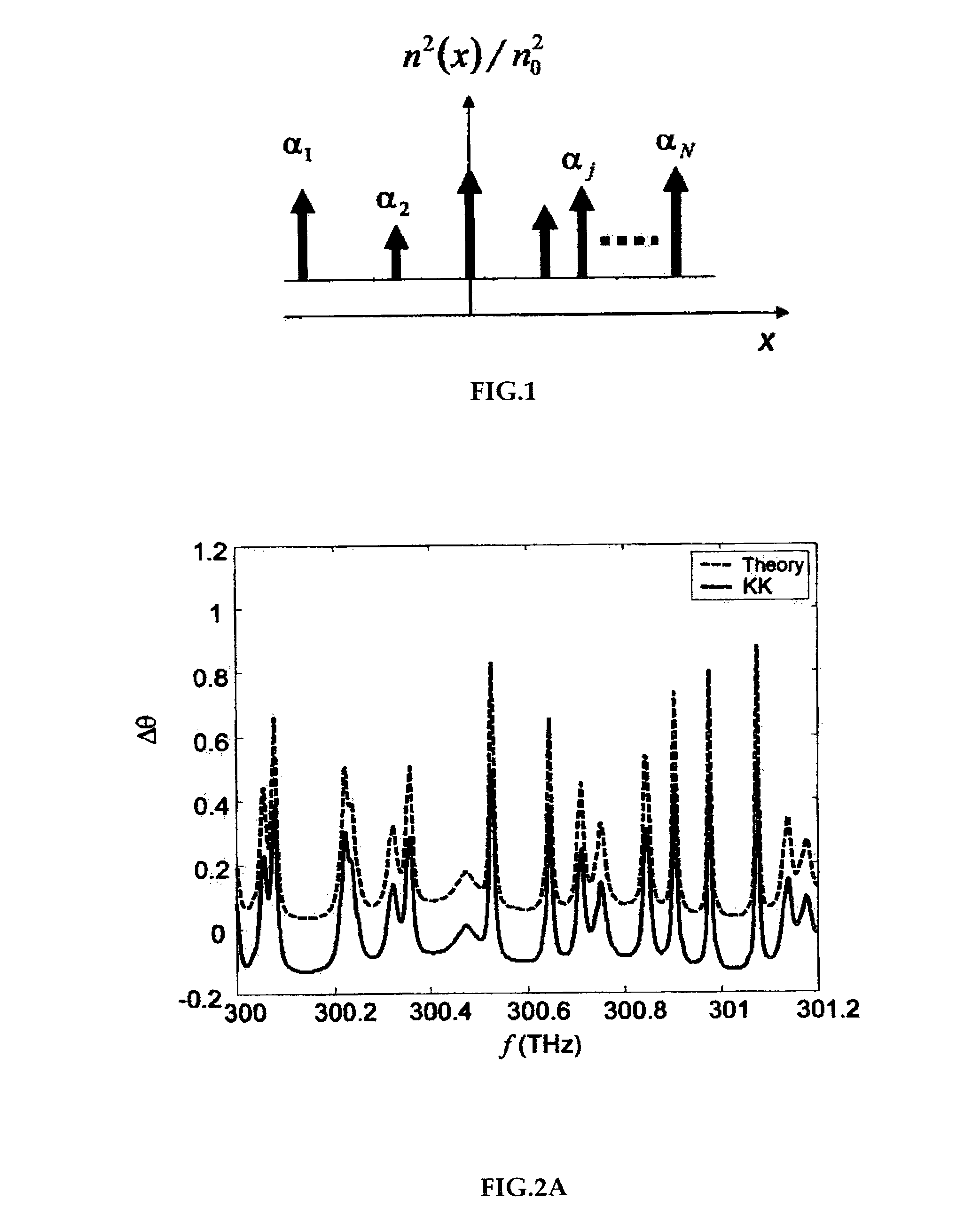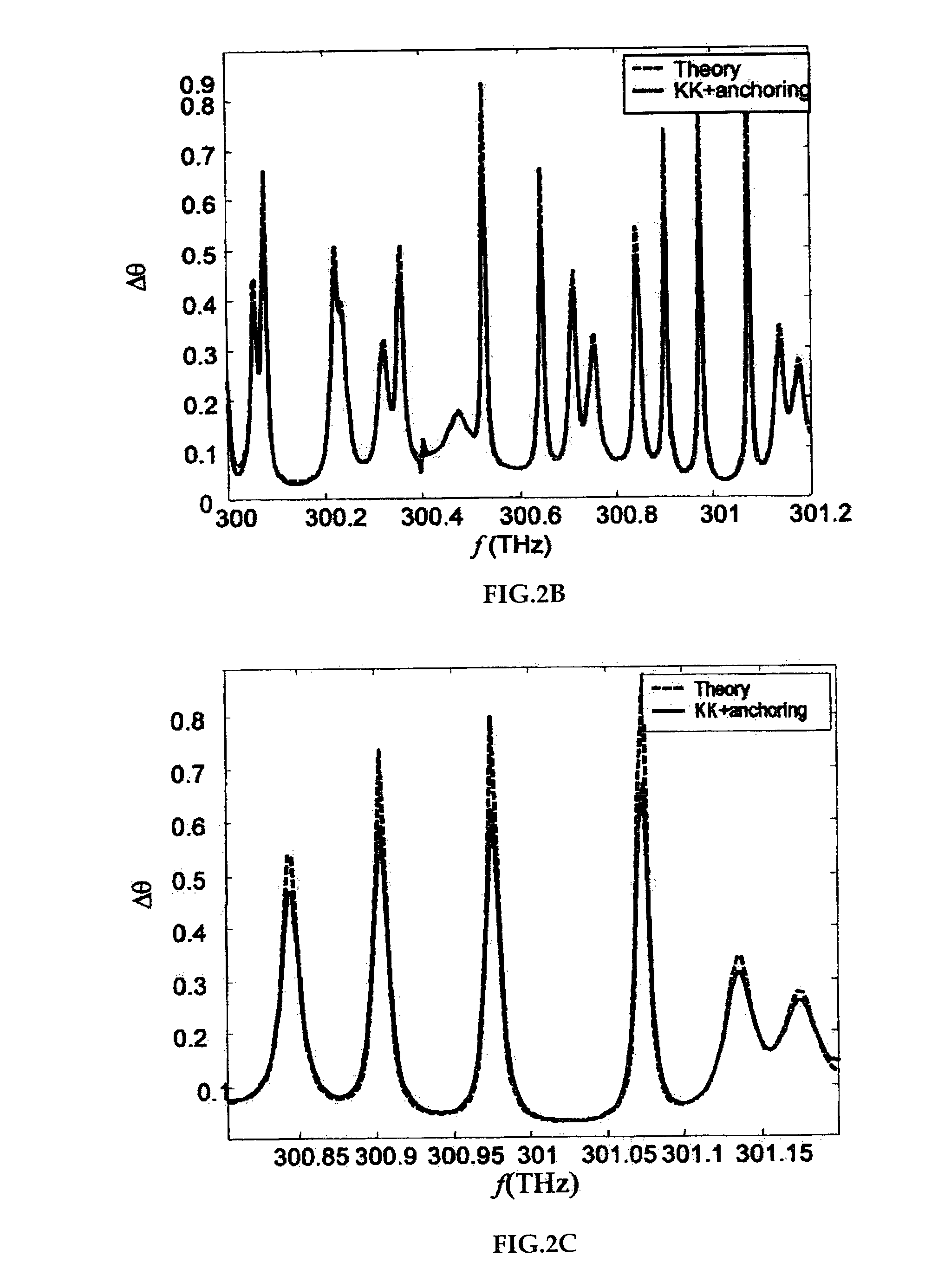Methods and devices for analyzing material properties and detecting objects in scattering media
a material property and scattering media technology, applied in the field of electromagnetic spectroscopy and imaging, can solve the problems of insufficient speed, large error, and inability to accurately analyze phase reconstruction, and achieve the effects of improving accuracy, improving accuracy, and improving results
- Summary
- Abstract
- Description
- Claims
- Application Information
AI Technical Summary
Benefits of technology
Problems solved by technology
Method used
Image
Examples
embodiment
of a Practical Implementation
[0165]FIG. 6 schematically shows an embodiment of a system for carrying out the necessary measurements required by some embodiments of the invention which include application of SPEBI. In FIG. 6, dotted arrows denote light paths and dashed arrows denote electronic signal paths. A light source 1 (transmitter) emits a light beam 3, which has a wide spectral width SW whose value is at least SW=ωH−ωL. The light source can be a laser, light emitting diode, or any other electromagnetic source. In some embodiments, the transmitter is a non-electromagnetic source such as an ultrasound transducer. The light is modulated in a modulator 2, which can be any optical modulator known in the art, e.g. electrooptic, acoustooptic, or mechanical chopper. In one preferred embodiment, the modulation is amplitude modulation, i.e. of the form cos(Ωt), where Ω=2πf and f is the light modulation frequency in Hz. Typical values of f lie in the regime between 10 MHz and 10 GHz. The...
PUM
 Login to view more
Login to view more Abstract
Description
Claims
Application Information
 Login to view more
Login to view more - R&D Engineer
- R&D Manager
- IP Professional
- Industry Leading Data Capabilities
- Powerful AI technology
- Patent DNA Extraction
Browse by: Latest US Patents, China's latest patents, Technical Efficacy Thesaurus, Application Domain, Technology Topic.
© 2024 PatSnap. All rights reserved.Legal|Privacy policy|Modern Slavery Act Transparency Statement|Sitemap



